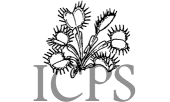|
Carnivorous Plant Newsletter
Volume 45, Number 1, March 2016, pages 33 - 35
New Cultivars
Sarracenia ‘Leigha Simone’
Utricularia ‘Brazilian Beauty’
Utricularia ‘Brazilian Beauty’
Submitted: 13 December 2015
In 2010 I crossed several flowers of Utricularia reniformis and U. nephrophylla. The resulting
seed was germinated with a single vigorous clone selected to grow. Although both species and the
cultivar are somewhat variable, the plant selected showed morphology intermediate between both
parents in leaf size and shape (Fig. 1) as well as flower size and shape (Front Cover).
The name Brazilian Beauty represents the location from which both parent species originate and
the attractiveness of the cultivar.
— Greg Bourke • Bilpin • NSW 2758 • Australia • greg.bourke@rbgsyd.nsw.gov.au
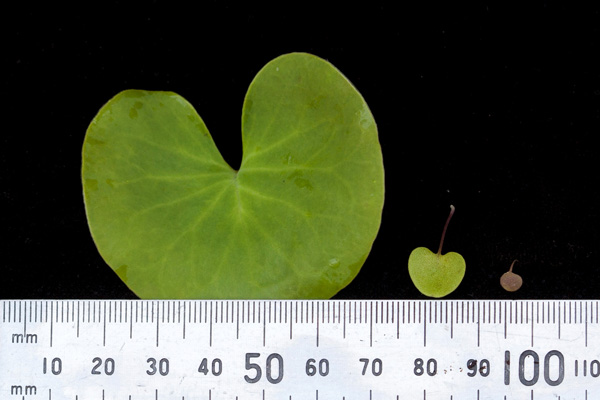
Figure 1: The leaves of Utricularia reniformis, U. ‘Brazilian Beauty’, and U. nephrophylla (left to right).
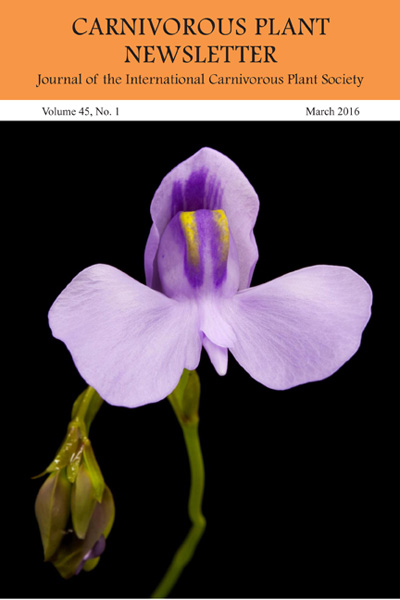
Front Cover: The beautiful flower of Utricularia ‘Brazilian Beauty’. Photo by Greg
Bourke.
Sarracenia ‘Leigha Simone’
Submitted: 22 November 2015
Sarracenia ‘Leigha Simone’ is one of the plants from seeds that I germinated in 2011. I received the seeds from Olivier Bres from France, who crossed S. leucophylla (locally named purple and white giant form from Route 71, Altha, Florida) × S. flava var. rubricorpora (from Blackwater River State Park).
The first thing that caught my eye about this plant is its color. When the pitchers are just about
to open, it is bright red with a very yellow hood (Fig. 2), just like a nice S. flava var. rubricorpora.
When the pitchers open, they resemble a S. flava var. rubricorpora with a frilly spotted hood. The
pitchers are about 75 cm tall with a thick tube, medium sized hood, and a thin peristome. As the
pitchers age, they get thick and waxy looking and turn from a bright red to a purple/burgundy color
with purplish/black veins and pinkish/white spots on the hood (Fig. 3). The flowers have reddish
orange petals with a yellow tips (Fig. 2). The plant is a vigorous grower, dividing regularly and
showing hybrid vigor.
This plant was named after my daughter. It should be reproduced only by vegetative means to
ensure that its unique characteristics are maintained.
— Eric Morrow • Russellville • Kentucky 42276 • USA • ericmorrowennem@yahoo.com
 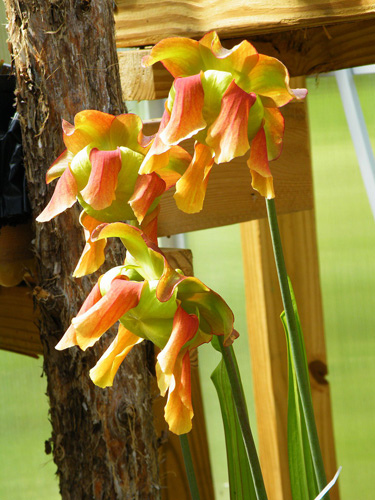
Figure 2: New Sarracenia ‘Leigha Simone’ pitcher about to open (left) and flowers (right).
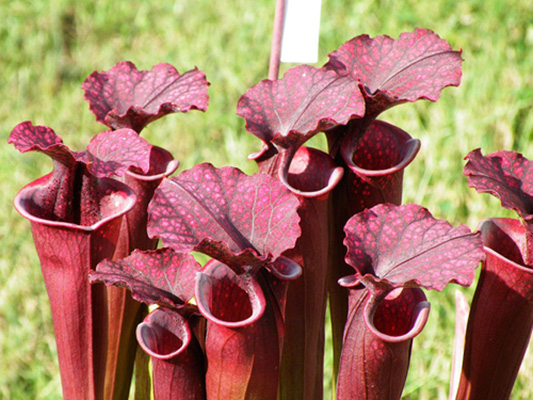
Figure 3: Sarracenia ‘Leigha Simone’ mature pitchers.
|
